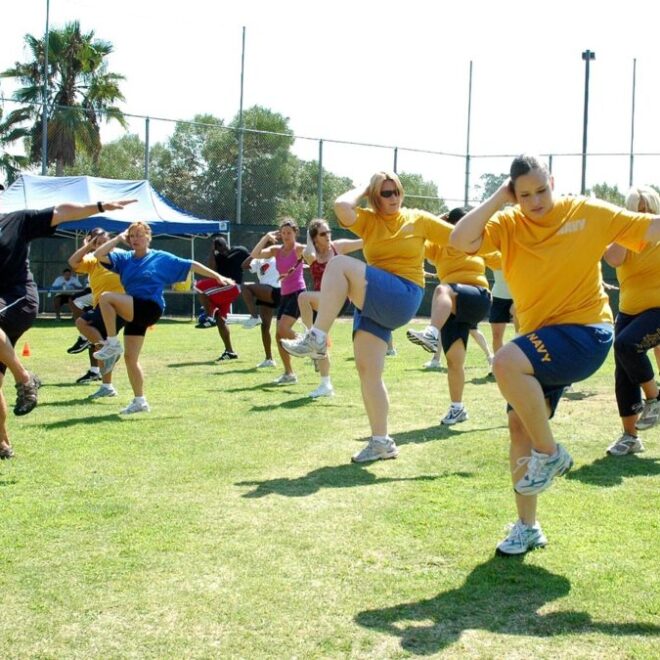Class: Primary 1
Term: 2nd Term
Week: 5
Age: 6 years
Duration: 45 minutes
Date:
Subject: Basic Science and Technology
Curriculum Theme: Basic Science
Topic: Movement
Content: Moving our body
SPECIFIC OBJECTIVES: At the end of the lesson, pupils should be able to:
- Define movement.
- Demonstrate some techniques in locomotor movement.
Instructional Materials:
- Picture Cards: Prepare picture cards depicting different locomotor movements such as walking, running, jumping, hopping, and crawling.
- Videos: Use educational videos or animations that demonstrate locomotor movements. This visual representation can help students better understand and imitate the movements.
- Props: Use props such as cones, hoops, or jump ropes to create an interactive and engaging environment for students to practice different locomotor movements. For example, set up a mini obstacle course where students can walk, run, jump over obstacles, hop in and out of hoops, etc.
- Music: Play energetic and rhythmic music to accompany the locomotor movement activities. This can make the learning experience more enjoyable and encourage students to move with enthusiasm.
- Real-Life Examples: Bring in real-life examples of locomotor movements by asking students to share their experiences. For example, discuss how they walk or run in the playground or how animals move in different ways.
- Interactive Games: Incorporate interactive games related to movement, such as “Simon Says” or “Follow the Leader,” where students can practice and imitate various locomotor movements while following instructions.
- Worksheets: Provide worksheets or activity sheets with exercises related to movement. This can include matching the movement with its corresponding picture, filling in the blanks with appropriate movement words, or drawing their favorite locomotor movement.
INSTRUCTIONAL PROCEDURES
Content Development: Moving our body.
| Time | Content | Teaching Method | Teacher’s Activities | Pupils’ Activities |
|---|---|---|---|---|
| 5 mins | Introduction | Discussion | Teacher welcomes students and explains the topic of the day. | Students listen attentively. |
| 10 mins | Defining Movement | Explanation | Teacher defines movement and provides examples of different types of movements. | Students pay attention and take notes. |
| 15 mins | Locomotor Movement Techniques | Demonstration | Teacher demonstrates various locomotor movements such as walking, running, jumping, hopping, and skipping. | Students imitate the movements. |
| 10 mins | Practicing Locomotor Movements | Guided Practice | Teacher guides students in practicing locomotor movements individually and in groups. | Students practice locomotor movements. |
| 5 mins | Evaluation | Questioning | Teacher asks students questions related to the lesson to assess their understanding of movement and locomotor movements. | Students respond to the questions. |
| 5 mins | Note Copying | Individual Activity | Teacher provides the important note for students to copy into their notebooks. | Students copy the note into their notebooks. |
Note:
What is Movement?
Movement is when something changes its position or place.
Techniques In Locomotor Movement
Locomotor movement
Locomotor movements are movements that involve traveling from one place to another. Examples and techniques of locomotor movements includes walking, running, jumping, hopping, crawling and skipping.
These movements help us to explore our environment and engage in physical activities.
Evaluation:
Ask the following questions to evaluate the lesson.
- What is movement?
- Give three examples of locomotor movements.
Teacher’s Aide:
- Visual Aids: Prepare visual aids such as posters or charts displaying key vocabulary words related to movement, including “movement,” “walking,” “running,” “jumping,” “hopping,” and “crawling.”
- Graphic Organizers: Use graphic organizers like Venn diagrams or T-charts to help students compare and contrast different locomotor movements. For example, create a chart that lists the similarities and differences between walking and running.
- Movement Cards: Create movement cards that contain written instructions for specific locomotor movements. Each card can have a simple command like “Walk in a straight line,” “Hop three times.
- Pictorial Sequencing Cards: Design sequencing cards that depict the steps of different locomotor movements in a sequential order. Students can arrange the cards in the correct sequence and narrate the movements aloud.
- Whiteboard or Blackboard: Utilize a whiteboard or blackboard to draw diagrams, write key points, or create simple illustrations to support your explanations.
NOTE TO TEACHERS:
Please note that the actual content of the lesson, teaching methods, and pupil activities may vary based on your specific teaching style, curriculum, or resources. Feel free to customize the lesson note to fit your needs.

